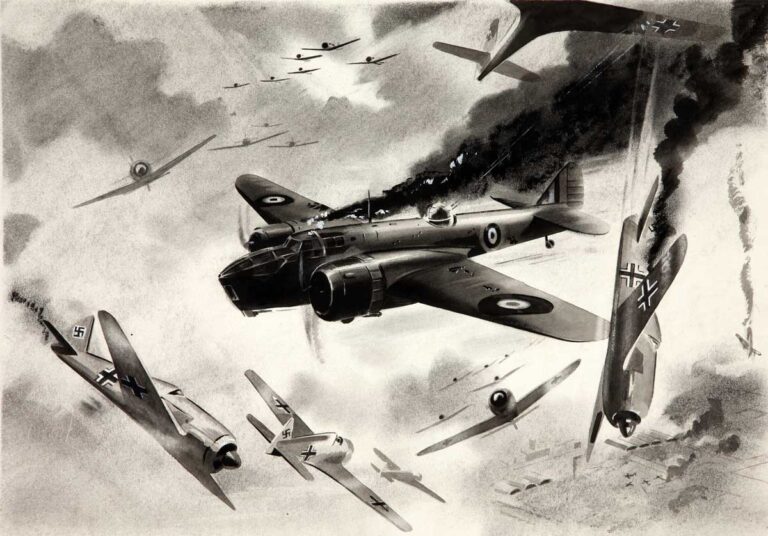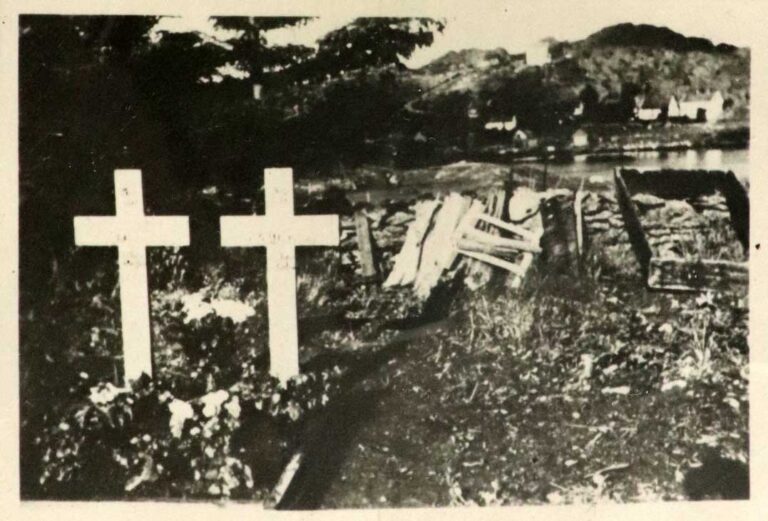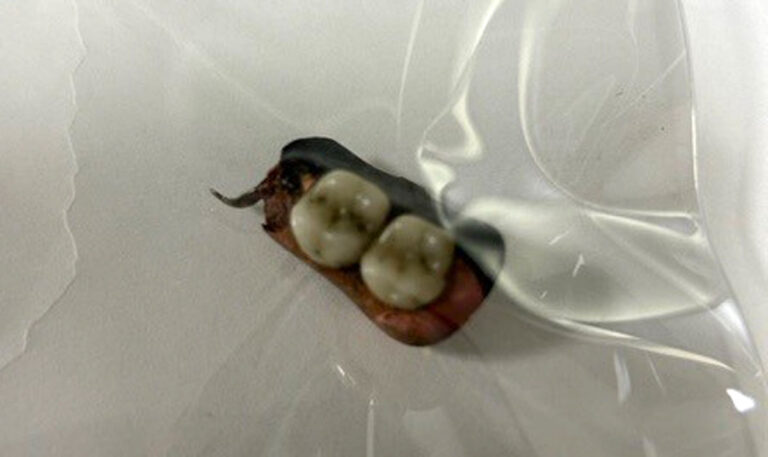This blog is published on the 60th anniversary of the UK release of the film, The Great Escape, which was based on the real escape of British and Allied Prisoners of War from Stalag Luft III. The escape largely consisted of Air Force personnel, and this blog is dedicated to all those airmen and officers who died on missions in Europe, many of whose bodies have never been recovered.
Earlier this year I wrote a blog about the completion of our volunteer-led project to catalogue, by name, British and Allied prisoners of war and civilian internees captured by German forces during the Second World War (recorded in series WO 416).
Included in this series of records are thousands of cards for people who were never taken as prisoners of war because they were deceased when they were found. Largely, these relate to aircrew who died when their planes crash landed or fell into the sea or on to the ground.

During the Second World War, Bomber Command aircrews suffered a high casualty rate: of a total of 125,000 aircrew, 57,205 were killed (a 46 percent death rate), a further 8,403 were wounded in action and 9,838 became prisoners of war.
When a body was found, a card was created noting the details of the deceased, usually obtained from identification discs worn round their necks, also known as dog tags. When cataloguing the data, the volunteers added in square brackets information gleaned from the Commonwealth War Graves Commission, providing further details of the individuals. But in many cases the bodies could not be identified, so much so that the last three pieces in WO 416 /415-417 relate to over 4,000 dead and unidentified individuals.
Bodies of the airmen were sometimes found near to the aircraft they flew in. Hundreds were washed up on the shore. Thousands, to this day, have never been recovered.
The ‘Missing Research Section’
The transfer of the AIR 81 series of records is helping us understand more about such cases. These are case files raised by Air Ministry Casualty Branch P4(Cas) in respect of Second World War RAF casualties. The staff of P4(Cas) were called upon from the outset to undertake research into the whereabouts and fate of RAF personnel listed as missing. As the day-to-day work of this branch mounted, it was decided in 1941 that a ‘Missing Research Section’ should be created within P4(Cas), charged primarily with conducting these detailed and time-consuming investigations.
Although all of the research undertaken prior to 1944 had to be conducted from London, the Allied liberation of Europe enabled search teams to operate in the field for the first time. The first of these, No 1 Missing Research Section, was formed in Paris in December 1944. By March of the following year, an ‘RAF and Dominion Air Forces’ Missing Research and Enquiry Service’ (MRES) had been established ‘for the purpose of research and enquiry, in liberated territories and those occupied by Allied forces, into the circumstances of air crews reported missing of whom no previous trace has been found.’
Each file relates to a specific incident or event, so mainly relates to a particular aircraft that was missing. These records are being transferred chronologically – we currently have files for cases up to the end of 1942. It is hoped that the transfer of this series (some 50,000 files) should be completed by December 2024.
An example: Wellington P.9246
AIR 81/135 reports the fate of Wellington P.9246 on 12 April 1940. It was reported to be out of control after engagement with enemy fighters, and the following crew members were all reported as ‘Missing’:
- Sergeant Horace James Wheller
- Sergeant Laurie Charles Wakeline
- Sergeant William Claude Parker
- Leading Aircraftman Richard Coalter
- Aircraftman Harry Gillot
- Aircraftman Frederick Tootle.
Over six months later, in December 1940, with no further news on the whereabouts of the crew, the Air Ministry contacted the next of kin to regretfully inform them that it was now assumed that the aircrew were all deceased.
Meanwhile, in Norway, the remains of the crew were washed up on the coast and buried in the nearby cemetery of Skudeneshavn, on the island of Karmøy. This news did not reach the Air Ministry until over a year later on 30 April 1941, when it was notified by the British Red Cross Society.
Two bodies were recovered from a rubber boat. It was suggested that one, 20–25 years old with red hair and heavy build, might be Frederick Tootle, but equally it was thought that it could be I Evans, as this was written on the band on the back of his jacket. The second was clearly identified as Sergeant L C Wakeline by his identity disc. Both bodies were found sitting upright looking towards each other. The former had been wounded by a gun shot in the left foot, though it was believed that both had frozen to death.

They were buried under German military honours on 15 April 1941 at Falnes Churchyard, Skudenes parish, and a large number of local people attended the funeral. After the war, the Commonwealth War Graves Commission would erect a permanent headstone.

It was assumed that all other members of the aircraft – Sergeant Horace James Wheller, Sergeant William Claude Parker, Leading Aircraftman Coalter and Aircraftman Harry Gillot – all died when the aircraft came down in the sea.
In August 1943, another two bodies were found washed up and in a decomposed state. On one, a glove was found with the following inscription: ‘580804 Parker’. This helped identify the third member of the crew, but the file acknowledges that this is not for certain – the gloves could have been worn by someone else. It was impossible to identify the body by any other means due to its advanced decomposition.
The scale of the task
The work of the Air Ministry Casualty Branch would continue long after the war ended. During 1945 a total of eight Missing Research Sections were established across Western Europe. However, such was the scale of the task that in July 1945 it was decided that this organisation should be greatly expanded. By April 1946 the eight Missing Research Sections had been replaced by four larger Missing Research and Enquiry Units (MREUs) covering Western and Central Europe. Subsequently, a fifth MREU was created in Italy to conduct investigations in Southern Europe and the Mediterranean. Missing research activities were also conducted in the Far East.
Although the MREUs were attached for administrative purposes to RAF formations in the country or region in which they were to operate, the MRES remained under the control of the Director of Personal Services, and its work was coordinated by P4(Cas).

Following the disbandment of the MRES on 30 September 1949, the casualty branch continued to be responsible for all aspects of research into those still listed as missing. A small number of ‘Missing Research and Enquiry Liaison Staffs’ (MRELS) posts remained after this date, and their work continued well into the 1950s.
Find out more
Find out more about Second World War internment and POW records at our free exhibition Great Escapes: Remarkable Second World War Captives. Opening Friday 2 February 2024, Great Escapes explores the human spirit of hope and resilience during times of captivity, revealing both iconic and under-told stories of prisoners of war and civilian internees during the Second World War.
We’ve also scheduled a season of special events to accompany the exhibition that are available to book now.
This is a poignant and heartfelt tribute to the brave men of Bomber Command. Their courage and sacrifice during World War II should never be forgotten. We owe them a debt of gratitude for their unwavering dedication and the tremendous risks they took to protect our freedom. May their memory live on, inspiring future generations to appreciate the sacrifices made for a better world. Thank you for sharing this moving tribute.
A fascinating insight into the subject. I often come across ‘sanitised’ or ‘weeded’ – for obvious reasons – MREU material as part of my searches in Air 81 files.
As such I really the sensitivity of the material and admire the usually unsung heroes of the search teams – most of whom were aircrew as they would have intimate practical knowledge of the types of aircraft and how the crew functioned.
Are there any plans to involve volunteers in work on the MREU reports?
I have to confess a personal interest in this work as I am trying to prove the identity of two unknown airmen to CWGC and thereby get their names put onto their respective headstones.
Thank you very much for sharing this. At present, there are no plans to involve volunteers in work on the MREU reports.
I wish you could find my Uncle who was shot down.
Three from the plane were found and have graves, presumably the plane and the other two crew (including my Uncle) are still missing……that was 1942
Hi Diane.
This will be obvious to many who use National Archives ‘Discovery’ but there may be those attracted by this post who don’t know how to begin.
The fact that you know some of the crew died and where they are buried means you have some information already.
Ideally, you really need one of more of the following bits of information: Squadron your uncle served with, aircraft serial, your uncle’s name, rank and service number.
Web sources.
CWGC: Have you tried the Commonwealth War Graves website (Find War Dead page) not only to look for your uncle but to look at the details of his colleagues?
If you do an internet search on one of these men, it might lead to a specialist website or forum and a crew list, perhaps even with their individual fates.
IBCC: If he was in Bomber Command try the Losses Database at the International Bomber Command Centre online.
Squadron Associations: Many of these have a presence online and have a wealth of information.
National Archives: Casualty packs are gradually being released by MoD – I think 1942 has been/will be released soon.
Try putting your uncle’s surname into ‘Discovery’ and in the Advanced section type Air 81 into the bit where it says ‘search within’. That will bring up any relevant reference to a Casualty Pack and the National Archives’ Air 81 reference so you can order it to view at Kew.
Another source is the Air 27 series which are individual squadron war diaries (Operational Record Books or ORBs). Usually these are monthly and come in two parts for each month; look at both for the month concerned, as one is usually a summary and the other a more detailed account.
These can be previewed and then ordered from the National Archives online and downloaded to your computer.
If your relative is posted missing then check the ORBs for a few months after the date they have not returned as they may have been captured and sometimes this is mentioned in the summary at the end of each month – i.e. ‘News was received that Sqn Ldr Jones and crew are Prisoners of War’.
Again using Discovery you can preview the Air 27 files so you can be sure that the info is there.
Also try searching for the name using WO 416 as this (as explained by the post author above) is a card index relating to those made POWs by the German or in some cases, those who were killed and their bodies recovered for later burial.
Not exactly related to the exact loss of aircraft are the Air 50 series. These are combat reports which often give serial numbers – very useful if the surname (or worse still, first name AND surname is a common one).
Be aware that first given first names may not be the ones the serviceman uses. It is possible that someone legally called say ‘Archibald’ might be known as ‘Jack’ for some reason.
The pointers above are just that – pointers and as you research you’ll find your own..
If this seems like a lot of hard work – well, it is.
But it’s also very rewarding – especially for someone with a family connection.
Finally, best of luck and I may see you in the Reading Rooms at Kew one day.